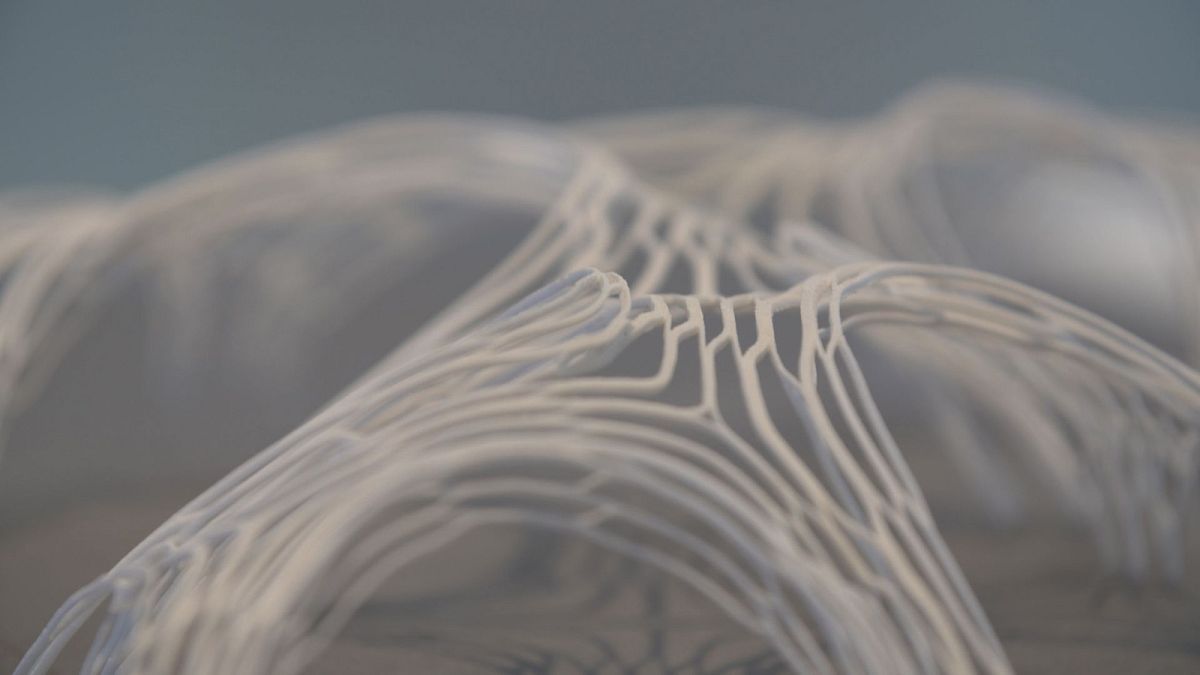Drones, VR, AI, 3D printing and scanning: how can all these new technologies help design the buildings of tomorrow? In search of answers, architects have teamed up with engineers and their findings have been shared at an exhibition in Copenhagen.
New technologies have always driven innovation in construction and building design, meaning the present day is an exciting time to be an architect; the technological advances of the digital age provide the industry with a plethora of new tools to take building design to the next step.
Drones, Virtual Reality, Artificial Intelligence, 3D-printing, Big Data and the Internet of Things; such are the new additions to the architect's toolbox that will change the way we build.
To discuss and debate how to use these new tools, architects and engineers gathered in Copenhagen for the Innochain exhibition 2018.
Hosted by the Danish Royal Academy of Fine Arts, the event was organised around the work of 15 researchers who used the latest digital tools to explore new horizons in Architectural design.
While models were developed using "old-skool" materials such as clay, filaments, concrete or wood, the ideas were very new: structural platforms in carbon and glass-fibres, wound by robots able to generate complex, resilient and multi-functional geometric forms.
Smaller, lighter, stronger...
James Solly, a structural engineer representing the University of Stuttgart, provides an example:
"The material is able to do more while being very small and spindly and tiny. To give some numbers behind that, the effective strength of these materials is about five times that of a normal structure in steel that you find in a building now, while being about five times lighter."
Other researchers have worked with elastic materials capable of shape-shifting to produce and store energy in facades, providing a kind of environmentally friendly, energy-efficient soft robotic skin for future buildings.
Saman Saffarian is an architect designer colleague of Solly's in Stuttgart. He gives another example of modern-day materials:
"[This] is like a metal ruler; when you bend it the energy stored in the ruler, and when you release it, it goes back. So with this system, you need to spend energy only in one direction. Other kinetic systems, or rigid body systems, always require that you spend energy to close and energy to open. This system has the potential to store the energy in one direction and harvest and reuse it for the way back."
New techniques open new doors for traditional materials
New techniques can also bring us fresh perspectives on traditional materials such as wood, as Tom Svilans, an architect at the Centre for Information Technology and Architecture (CITA) explains:
"We can make very complex, very large, very robust buildings out of laminated timber. The problem is that, because it a living, biological material, it has its own behaviours. When you bend it, it can spring back, or sometimes it bends back. So we need ways to keep track of all this. Because if you can't produce accurately what you want to, it becomes very difficult and very expensive very quickly. So by introducing 3D scanning into the process, we can have a closer connection to what the material is actually doing while we process it."
The exhibition was the fruit of a European research project aimed at linking simulation, materials and designs to imagine a future where ever more buildings will need to be built with ever fewer materials, and in more sustainable ways.
Mette Ramsgaard Thomsen, an architect at CITA and project coordinator at the Innochain exhibition, says that with newer knowledge, we can get more from our materials:
"Building smarter with less means material optimisation. (It means) that we are clever about how we use those materials; it means that we can build lighter. And lighter does not only mean less materials, like a smaller piece of wood but also lighter in forms of less transport, less weight and less impact on the environment. And these are just necessary paradigms for the future."
Understanding how to apply new technologies, and how best to integrate them, does take time. But not too much: researchers say some of the solutions mentioned above could be embedded into real construction sites within five years.




